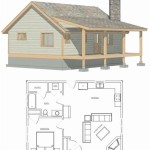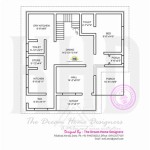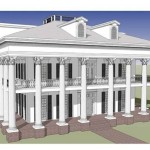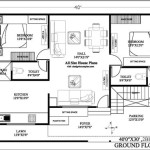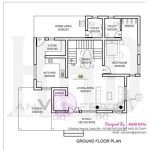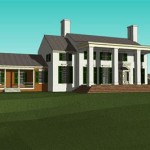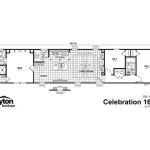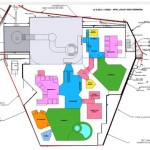Mountain Cabin Floor Plans With Loft: Maximizing Space in Scenic Settings
Mountain cabins represent a desirable escape for many, offering tranquility and connection with nature. When designing or selecting a mountain cabin, maximizing usable space is paramount, especially given potential limitations on land and the desire for comfortable living areas. Floor plans incorporating lofts provide an effective solution for achieving this goal, adding valuable square footage without expanding the building's footprint. This article explores the key considerations and benefits associated with mountain cabin floor plans that feature a loft, offering insights into design options and practical applications.
The incorporation of a loft into a mountain cabin design significantly impacts the overall structure and functionality. The loft, generally located above the main living area, kitchen, or bedrooms, creates a versatile space suitable for various purposes. Common uses include additional sleeping quarters, a home office, a reading nook, or a play area for children. The design of the loft, including its size, accessibility, and finishes, directly influences its usability and integration with the rest of the cabin.
Careful planning is essential to ensure the loft complements the design and enhances the cabin's overall aesthetic appeal. Considerations such as ceiling height, natural light, and ventilation are crucial for creating a comfortable and functional loft space. Integrating the loft seamlessly with the rest of the cabin through architectural features, such as open staircases and strategically placed windows, is vital for achieving a cohesive and aesthetically pleasing design.
Benefits of Lofted Mountain Cabin Floor Plans
The primary advantage of incorporating a loft into a mountain cabin floor plan is the efficient maximization of space. By utilizing the vertical dimension of the cabin, a loft adds considerable usable square footage without requiring a larger foundation or a significant increase in construction costs. This is particularly beneficial in areas where land is limited or expensive, allowing for a more spacious interior without compromising the natural surroundings.
Furthermore, lofts often contribute to the aesthetic charm of a mountain cabin. The elevated perspective provides unique views of the surrounding landscape, and the open design fosters a sense of spaciousness and connection within the cabin. Exposed beams, natural wood finishes, and strategically placed windows can enhance the loft's visual appeal, creating a cozy and inviting atmosphere.
Lofts are also inherently flexible spaces, adaptable to a variety of needs and preferences. Depending on the size and configuration of the loft, it can serve multiple purposes, such as a guest bedroom, a home office, a media room, or a recreational area. This versatility makes lofted cabins ideal for families, couples, or individuals who value adaptable living spaces that can evolve over time.
Design Considerations for Lofts in Mountain Cabins
Several critical design considerations must be addressed to ensure a well-designed and functional loft space. The first and perhaps most important consideration is access. Staircases or ladders provide access to the loft. While ladders are more space-efficient, they may not be suitable for all users, particularly the elderly or those with mobility limitations. Staircases, although requiring more space, offer a safer and more comfortable means of access. Spiral staircases represent a compromise, providing a more compact footprint than traditional staircases while still offering improved accessibility compared to ladders.
Adequate headroom is a vital factor in loft design. Insufficient headroom can render the loft unusable or uncomfortable. Building codes often specify minimum headroom requirements for habitable spaces, and these requirements should be carefully considered during the design process. The placement of windows and the slope of the roof also impact headroom availability, requiring careful planning to optimize the loft's functionality.
Natural light and ventilation are essential for creating a comfortable and inviting atmosphere in the loft. Strategically placed windows can provide ample natural light and enhance the loft's connection with the surrounding environment. Skylights are another option for maximizing natural light, particularly in areas where wall space is limited. Proper ventilation is also crucial for maintaining air quality and preventing moisture buildup. Windows, vents, and ceiling fans can all contribute to effective ventilation within the loft space.
In addition to these functional considerations, the aesthetic design of the loft should complement the overall style of the cabin. Natural materials, such as wood and stone, can create a rustic and inviting atmosphere. Exposed beams, vaulted ceilings, and strategically placed windows can enhance the loft's visual appeal and create a sense of connection with the surrounding landscape. The use of appropriate lighting fixtures, furniture, and décor can further personalize the loft space and create a comfortable and functional living area.
Material Selection and Construction Techniques
The choice of materials for a mountain cabin with a loft is influenced by factors such as cost, availability, durability, and aesthetic appeal. Wood is a common choice for framing, flooring, and interior finishes, providing a natural and rustic aesthetic that complements the mountain setting. Locally sourced wood can often be a sustainable and cost-effective option. Stone is another popular material for foundations, fireplaces, and exterior accents, adding durability and visual interest to the cabin's design.
Construction techniques for lofted cabins often involve post-and-beam construction, which allows for open floor plans and exposed beams. This type of construction can create a sense of spaciousness and visual appeal, while also providing structural support for the loft. Timber framing is another option, offering similar aesthetic benefits and structural advantages. Both post-and-beam and timber framing require skilled craftsmanship and careful attention to detail.
Insulation is a crucial consideration for mountain cabins, particularly in areas with harsh winters. Proper insulation can help to maintain a comfortable indoor temperature and reduce energy consumption. Spray foam insulation, fiberglass batts, and rigid foam boards are common options, each with its own advantages and disadvantages. The choice of insulation material should be based on factors such as cost, R-value, and ease of installation. Air sealing is also important for preventing drafts and reducing energy loss.
Roof design is another critical aspect of constructing a mountain cabin with a loft. Gable roofs are a common choice, providing ample headroom and allowing for the integration of dormers or skylights. Shed roofs are another option, offering a more contemporary aesthetic and facilitating efficient drainage. The roof's pitch and overhang should be carefully considered to ensure adequate protection from snow and rain. Durable roofing materials, such as metal, asphalt shingles, or wood shakes, are essential for withstanding the harsh weather conditions often encountered in mountain environments.
Finally, it is crucial to adhere to local building codes and regulations during the design and construction of a mountain cabin with a loft. Building codes regulate aspects such as structural integrity, fire safety, and accessibility. Compliance with these codes is essential for ensuring the safety and longevity of the cabin. Consulting with a qualified architect or builder is highly recommended to navigate the complexities of building codes and regulations and to ensure that the cabin meets all applicable requirements.

Small Cabin Designs With Loft Floor Plans

Small Mountain Cabin Plan By Max Fulbright Designs Floor Plans House

Cabin Floor Plan Log Home Plans House Homes

Small Mountain House Plans Houseplans Blog Com

Small Mountain Cabin Plan By Max Fulbright Designs

Browse Floor Plans For Our Custom Log Cabin Homes House Home

Small Mountain Cabin Plan By Max Fulbright Designs

Cozy Cabin Retreat 2 Bed Bath

Small Cabin House Plans With Loft And Porch For Fall Houseplans Blog Com

Small Mountain House Plans Houseplans Blog Com

